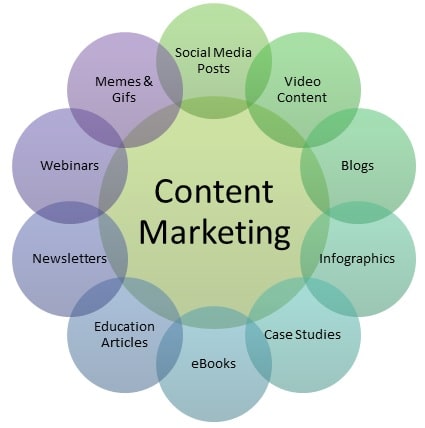
As technological advancements and consumer behaviors shift, staying ahead of the marketing curve is becoming increasingly critical. This evolution will create challenges in the manufacturing industry, but it’s also an exciting time that should facilitate growth.
Implementing a few marketing strategies can help manufacturing companies unlock significant growth potential and succeed in a competitive industry. The manufacturing space will have an estimated output of $35.2 trillion in 2024 and is still growing, so you’ll have to work hard if you want to stand out.
However, leveraging digital tools, harnessing the power of data, and building a compelling brand identity help capture your target audience’s attention. This article explains how to market a manufacturing company in 2024, guiding you through innovative strategies that work in this sector.
Quick Takeaways
- Conducting thorough research to know your target audience’s needs and analyzing competitors to find market gaps and opportunities helps you understand your market.
- Defining your unique selling proposition, creating a compelling brand story, and ensuring consistent visual and verbal communication establish a strong brand identity.
- Optimizing your website for SEO, creating valuable content, and engaging on the right social media platforms can reach and attract your audience.
- Using analytics to track performance and make data-driven decisions enables you to use data to its full potential.
Understanding Your Market
Before all else, you’ll need to understand your specific market. This step begins with thorough market research.
Your Target Audience
Knowing your target audience is essential because it allows you to tailor your marketing strategies to meet their specific needs and preferences. Tools like surveys, focus groups, and industry reports are invaluable for gathering this information.
Surveys can provide direct feedback from customers, while focus groups offer deeper insights into customer perceptions and behaviors. Industry reports help you stay informed about market trends and competitor activities.
In the manufacturing industry, your target audience is companies that sell products you have the ability to manufacture. These organizations could be looking for a change because their current manufacturer isn’t meeting their needs.
What Your Market Needs
Identifying market needs involves understanding the pain points and demands of your potential customers.
What challenges are they facing, and how can your services solve these problems?
Analyzing competitors is important; by studying what others in your industry are doing, you can identify gaps in the market and opportunities for differentiation.
Staying attuned to market trends and customer needs ensures that your marketing efforts are relevant and effective. You’re trying to fill gaps in the market, so you need to know where these gaps are to capitalize on them.
Developing a Strong Brand Identity
A strong brand identity is essential for marketing a manufacturing company in 2024. It sets you apart from competitors and makes a lasting impression on your audience.
Brand Positioning
Start with brand positioning, which involves defining your unique selling proposition (USP). Your USP is what makes your company different and better than others in the market. It could be superior product quality, innovative technology, green manufacturing services, or exceptional customer service.
Once you identify your USP, craft a compelling brand story that resonates with your target audience. This story should highlight your company’s values, mission, and the benefits you offer, connecting emotionally with your customers.
A Visual Identity
Next, focus on creating a consistent and professional visual identity. This process includes designing a memorable logo, choosing brand colors that reflect your company’s personality, and selecting fonts that enhance readability and aesthetics. Consistency in visual elements helps build brand recognition and trust.
Brand Voice
Equally important is developing a brand voice and messaging strategy. Your brand voice should reflect your company’s character, whether it’s formal, friendly, authoritative, or innovative.
Consistent messaging across all platforms ensures that your audience receives a cohesive and clear message about who you are and your values.
Digital Marketing Strategies
Digital marketing is a cornerstone of successfully promoting a manufacturing company. Your customers will look online for service providers, so you have to do everything in your power to increase your visibility in the places they’re searching.
Website Optimization
A digital marketing strategy starts with website optimization. Your website must be user-friendly and mobile-responsive, ensuring a smooth experience for visitors on any device. A well-optimized website attracts more visitors and keeps them engaged.
Implementing SEO best practices is crucial for higher search engine rankings. This tactic includes using relevant keywords, optimizing meta tags, and ensuring fast load times. High search rankings make it easier for potential customers to find you.
Content Marketing
Content marketing is another vital strategy. Creating valuable content like blogs, whitepapers, and case studies establishes your company as an industry expert. This content should address common questions and challenges your audience faces.

Video marketing is another powerful tool for showcasing your products and processes, offering a visual and engaging way to communicate your expertise and capabilities.
Social Media Marketing
Social media marketing is equally important. Choose the right platforms based on where your audience spends their time:
- LinkedIn is the perfect place to initiate B2B connections
- Facebook offers a broader reach, especially for local connections
- Instagram enables visual storytelling, which works for some manufacturing firms
Develop strategies to engage and grow your social media following like sharing industry insights, behind-the-scenes content, and customer success stories.
Engaging consistently with your audience builds relationships and drives brand loyalty, making digital marketing a critical component of your overall strategy.
Utilizing Data and Analytics
Data and analytics are vital when marketing a manufacturing company in 2024. The more information you gather and use, the easier it becomes to reach the right audience with your message.
Tracking Metrics
Start by tracking and measuring performance. Key metrics to monitor include:
- Website traffic
- Conversion rates
- Social media engagement.
Website traffic tells you how many visitors are coming to your site, while conversion rates indicate how many of those visitors are taking desired actions like making a purchase or filling out a contact form. Social media engagement, including likes, shares, and comments, helps you understand how well your content resonates with your audience.
Tools to Use
To gain a deeper understanding of this data, use tools like Google Analytics and social media insights.
Google Analytics provides detailed information about your website’s performance, such as user behavior, traffic sources, and demographic data.
Social media platforms offer their own analytics tools, which can reveal how your posts are performing and who is engaging with your content.
From there, you can see if your content is resonating with your ideal audience and adjust your strategy if it’s falling short of your goals.
Making Adjustments
Adjusting strategies based on data is crucial for optimizing marketing efforts. Make data-driven decisions by analyzing the insights you gather.
For example, if a particular type of content generates more engagement, focus on producing more of that content. Implement A/B testing to compare different versions of your marketing materials and see which performs better.

Continuous improvement through regular analysis and adjustments ensures your marketing strategies remain effective and aligned with your business goals.
Reaching Your Marketing Goals
You won’t achieve your marketing goals overnight, as it will take significant long-term effort to get there. However, you’ll see movement toward your objectives once you identify your ideal customers, provide them with something different than others in your space, and reach them with the message.
Digital marketing is integral to any strategy, and Marketing Insider Group can assist with our Content Builder Services. Contact us to learn how we can develop the content you need, or book a free virtual appointment with our team.
0 Commentaires